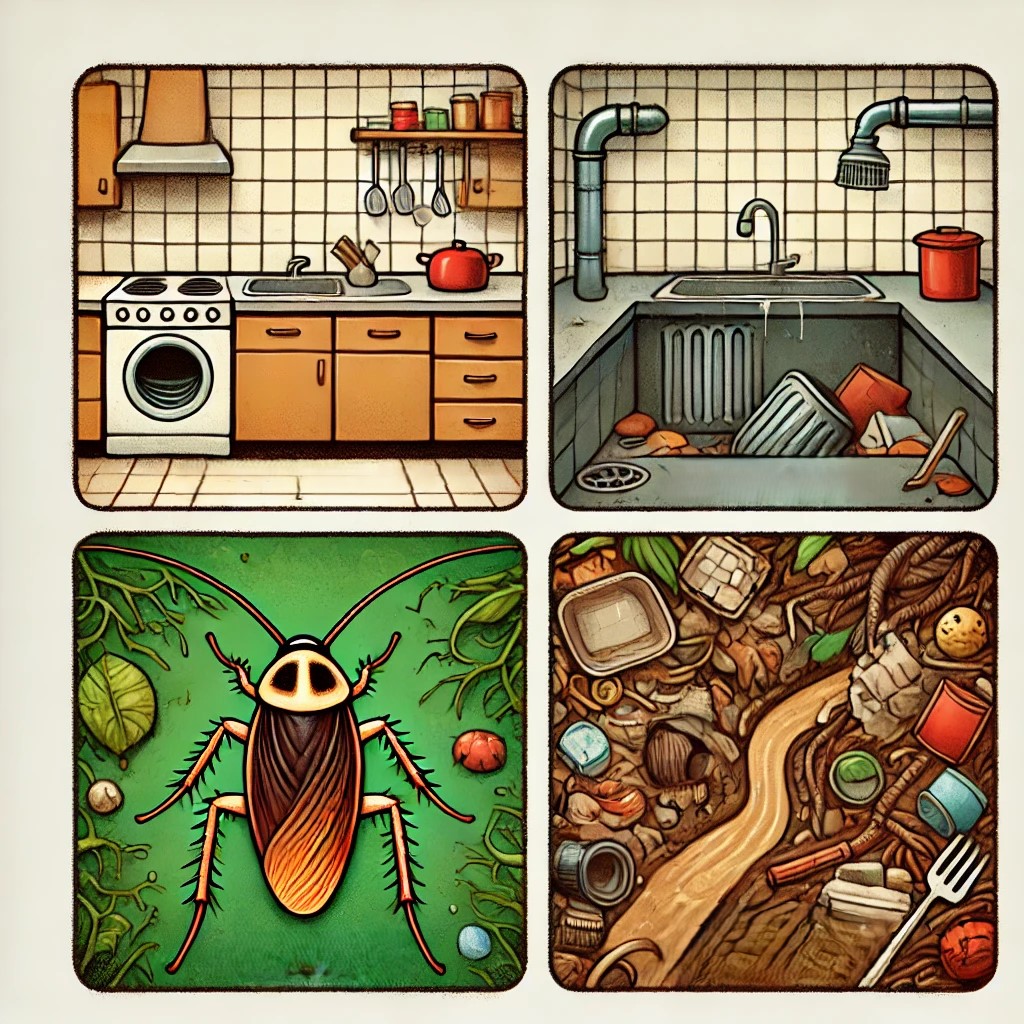
Cockroaches (Blattodea) are one of the most successful and resilient groups of insects on the planet. Their ability to adapt and survive in a wide variety of environments—from tropical jungles to densely populated urban areas—is astonishing. One of the keys to their evolutionary success lies in their sophisticated feeding strategies, which involve physiological, behavioral, and sensory adaptations to exploit a diversity of food sources.
Cockroaches are generalist omnivores, meaning they can consume organic matter of both animal and plant origin. This dietary flexibility allows them to exploit a wide range of resources, from human food scraps to decomposing materials and cellulosic substances like paper and wood. Their chewing-type mouthparts are highly specialized, with strong and robust mandibles capable of grinding tough plant fibers and animal proteins, thereby facilitating digestion.
Their ability to locate food is based on a highly developed sensory system. Equipped with sensitive chemoreceptors located on their antennae and other parts of the body, cockroaches can detect chemical molecules in the air and on surfaces. These receptors can identify minimal chemical signals indicating the presence of food, even at considerable distances.
The antennae of cockroaches function as sophisticated detection instruments. Sensilla, specialized structures on the antennae, allow them to analyze the chemical environment with great precision. In addition to detecting odors associated with food, they can perceive pheromones used in intraspecific communication, which is crucial for social behaviors such as collective foraging.
Although they are omnivores, cockroaches show preferences for foods rich in carbohydrates and sugars, which provide quick energy for their activities. They also seek proteins and fats, essential for their growth and reproduction. Their foraging behavior is predominantly nocturnal, thus reducing competition and the risk of predation. During their nocturnal explorations, they combine random movements with responses directed by olfactory, tactile, and gustatory stimuli in a process known as exploratory foraging.
In some species, social behavior enhances efficiency in food searching. Cockroaches can leave chemical trails, known as trail pheromones, which guide other individuals toward food sources. This cooperative behavior maximizes resource exploitation and strengthens colony cohesion.
One of the most fascinating characteristics of cockroaches is their ability to digest cellulose-rich materials like paper and wood. Since cellulose is a complex molecule that animals cannot break down by themselves, cockroaches rely on a microbial symbiosis in their digestive tract. Specialized bacteria and protozoa break down cellulose into simpler compounds, such as sugars and short-chain fatty acids, which cockroaches can absorb and use as an energy source.
Cockroaches possess a highly efficient metabolism that allows them to survive long periods without food. In situations of scarcity, they can live for weeks or even months ingesting only water, utilizing their body fat reserves to remain active. Some species are capable of entering a state of diapause, a phase of reduced activity similar to hibernation, which decreases their energy consumption until environmental conditions improve.
Their ability to adapt to urban environments is due to their flexible feeding strategies and discreet behaviors. They can exploit almost any waste, from food scraps in kitchens to garbage in sewage systems. Their habit of hiding during the day in cracks and crevices, emerging at night to forage, allows them to exploit food sources in homes and buildings without being easily detected.
Even when food is securely stored, cockroaches can chew materials like cardboard and plastic that contain traces of food, making them a persistent threat, especially in the food industry.
Understanding the feeding strategies of cockroaches is crucial for developing effective control methods. Since they rely heavily on their sensory systems and foraging behaviors, control strategies focus on disrupting these processes.
At Eco Fauna Control, we use advanced formulations of gels and toxic baits that contain specific food attractants. These products exploit the dietary preferences of cockroaches and are highly effective in eliminating them. Upon ingestion, the baits not only affect the individual consuming them but can also be transmitted to other colony members through coprophagy (consumption of feces) and direct contact.
Additionally, we implement physical barriers and improvements in environmental hygiene to reduce food and water sources, making the environment less attractive to cockroaches. This comprehensive approach disrupts their feeding and reproductive cycles, achieving more sustainable and efficient control.
The ability of cockroaches to find and process food is a testament to their adaptability and evolutionary success. Their sophisticated physiological, sensory, and behavioral adaptations allow them to thrive in a variety of environments, including urban areas. However, through the use of advanced control strategies and specialized products like those of Eco Fauna Control, it is possible to effectively manage infestations and reduce the impact of these persistent insects in our communities.
